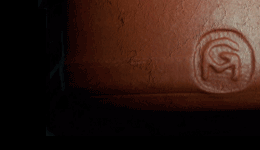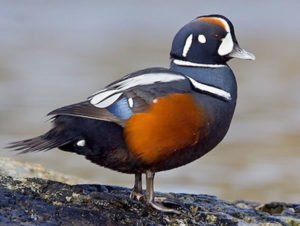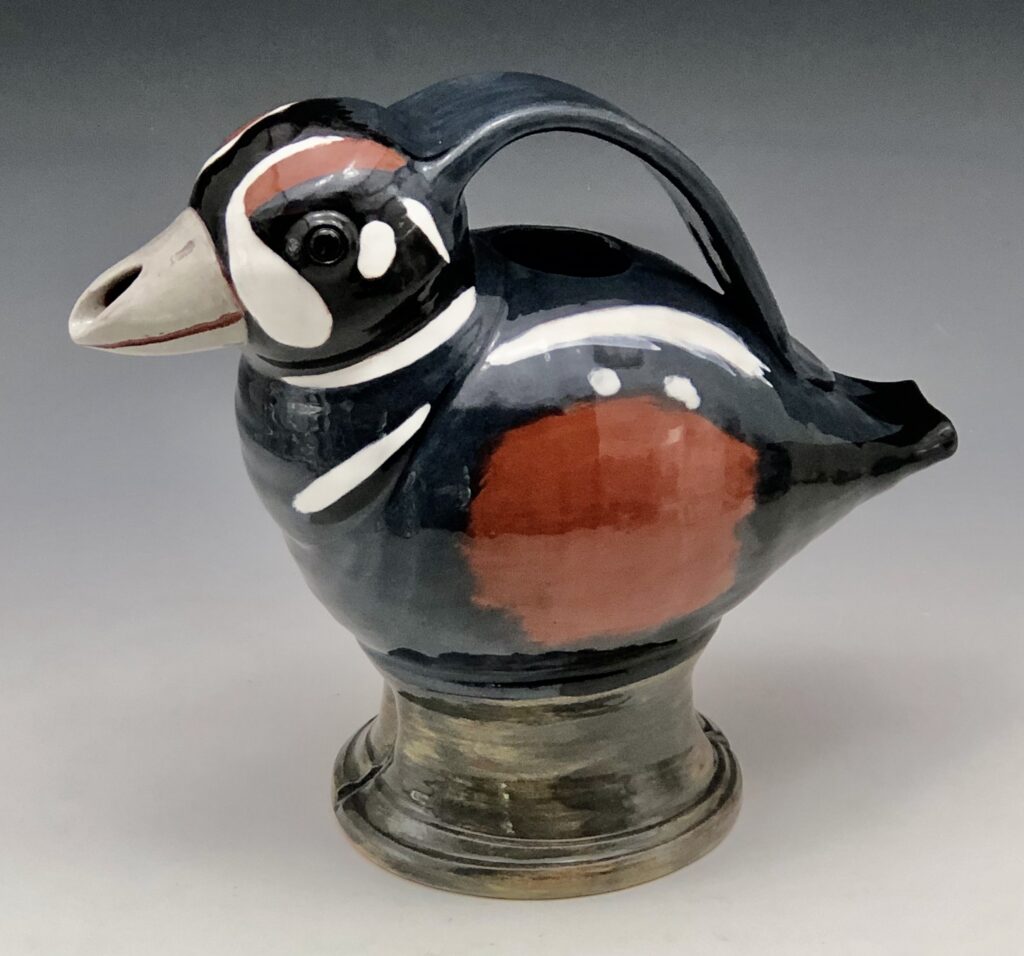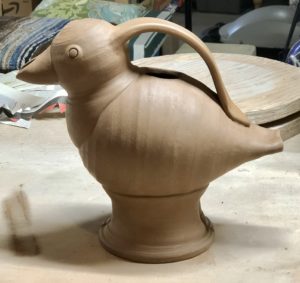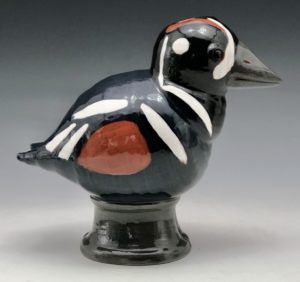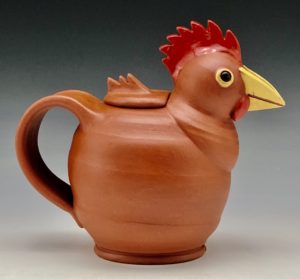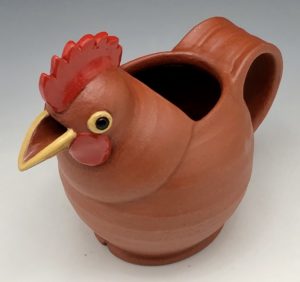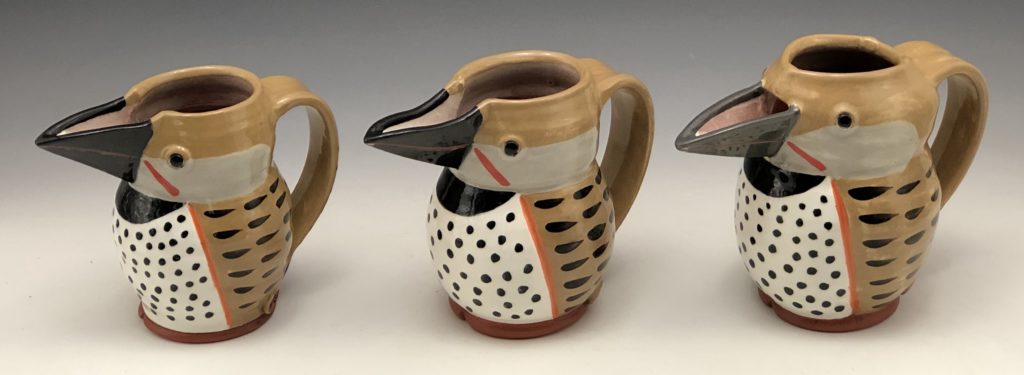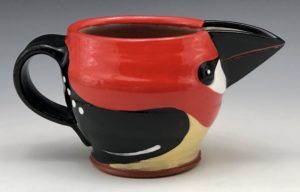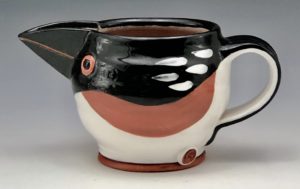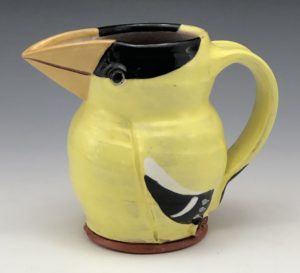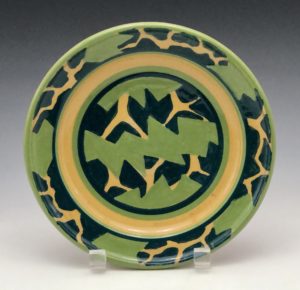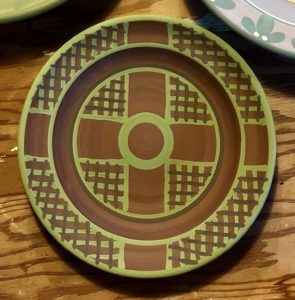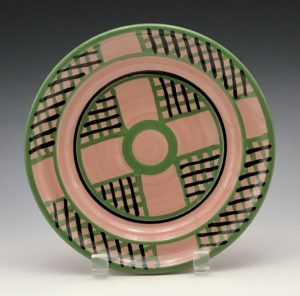A special request had me researching duck shapes again. The Harlequin Duck doesn’t lend itself to being a tall jug so I opted to make him with three wheel-thrown parts, plus a teeny cone for his bill. These shapes wind up imitating the way a duck walks or swims. Then what is the best way to fill him? I decided to put a filling hole under the handle. It was a challenge to find the right slate-grey and russet patches for him.
I can share a photo of this new fellow now because Canada Post has delivered him to his new owner in Alert Bay. We didn’t want to spoil the surprise. I’m glad you like him DP. I wonder if Harlequin ducks swim by in the Broughton Archipelago?
Here is a smaller Harlequin Duck. He has a hole in his head for filling and is small enough that I felt no handle is required.
And another jolly fellow, painted a super Peacock blue, is going to live in Victoria.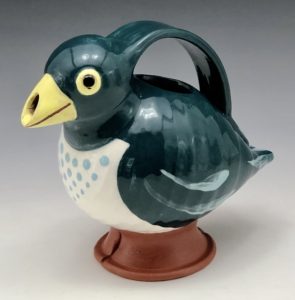
These shapes then led me to make others with a separate section for the head, including a Chicken Teapot and Jug. Like some larger Roosters that I have made in the past, I felt that terra sigillata would be a lovely finish for the feathers, and I used ochre slip for beaks and red underglaze for the combs.
I like to keep a variety of my jugbirds on hand so there are now some more Northern Flickers, a Towhee, a Red-breasted Sapsucker and a Goldfinch.
Apart from these jugbirds and the Rainforest plates I had a few other plate oddities filling the space.. here are a couple of lunch-size ones. The pink one has a ‘sienna’ colour slip. I like the way the cross-hatching design worked out but it looked more interesting in the leather-hard stage. Right? More painting and colour combinations suggest themselves after studying the latest kiln load.
